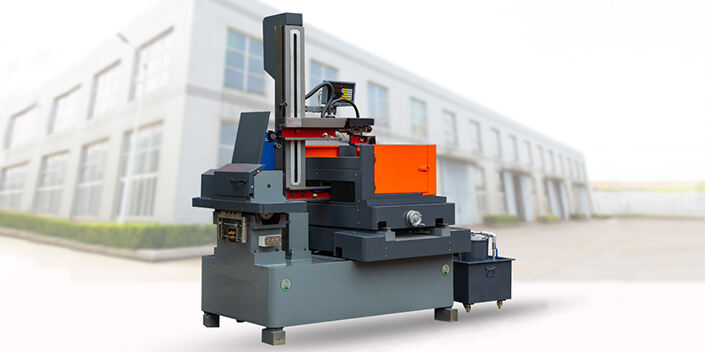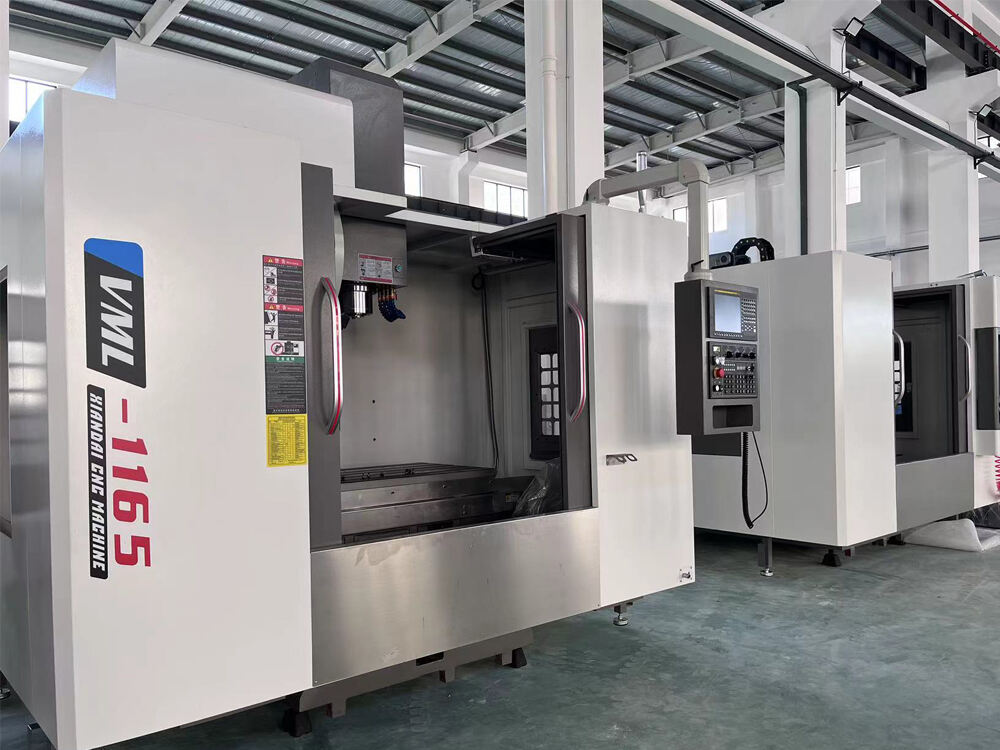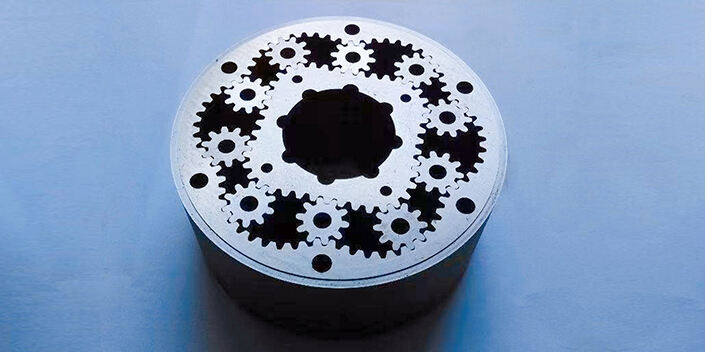Energy-Saving Tube Mill Technologies in Sustainable Pipe Production
The Role of Tube Mills in Reducing Energy Consumption
Tube mills play a key role in making manufacturing processes more efficient, helping save energy through less material waste and faster production runs. Modern versions come equipped with better tech like high efficiency motors and upgraded gears that cut down on power needs. When companies focus on getting the most out of their tube mill energy use, they typically see lower costs and a smaller environmental impact. Industry numbers back this up pretty well actually. Studies indicate newer tube mill tech can slash energy consumption by around 25% compared to what was used before. This shows why staying current with equipment upgrades remains so important for manufacturers wanting to stay competitive while being environmentally responsible.
Wire EDM and Precision Cutting for Material Efficiency
Wire EDM or Electrical Discharge Machining has become known for its incredible accuracy when cutting materials. What makes this technique so good is that it saves money on materials while generating far less scrap than other methods. When companies use wire EDM they can create really detailed parts with complicated shapes all in one go, no extra machining needed afterwards. The benefits are particularly noticeable in pipe manufacturing where getting the dimensions right matters a lot. Industry data shows that switching to wire EDM cuts down on wasted material by around 30% compared to older cutting techniques. For manufacturers looking to save costs and be greener at the same time, this technology represents a real breakthrough in how efficiently we use raw materials today.
Automated Systems for Optimal Energy Use
When it comes to energy efficiency, automation really makes a difference because machines run better and need less hands-on attention from workers. Factories that install things like automatic feeders and smart monitors tend to keep their power usage where it should be, cutting down on wasted electricity. Some big manufacturing plants have seen their energy bills drop around 20% after switching to these automated setups. The bonus is twofold actually - operations get smoother running and there's less carbon dioxide going into the atmosphere. Take automotive assembly lines for example, many car makers now rely heavily on robots which not only cut costs over time but also help them comply with those tough new environmental regulations without sacrificing production speed or quality standards.
Advanced EDM Solutions for Eco-Friendly Pipe Manufacturing
EDM Electrical Discharge Machining: Minimizing Waste
EDM stands for Electrical Discharge Machining and plays a key role in making pipes with much less material waste than traditional methods. The process works by sending controlled electrical sparks between two electrodes to cut through metal with incredible precision. Because it removes only what's needed, there's far less scrap left over compared to other machining techniques. For companies focused on green manufacturing, this matters a lot since conventional machining often produces tons of wasted material. According to some recent studies, factories using EDM report around a 25% reduction in waste materials. Not only does this save money on raw materials, but it also helps maintain tight quality control across production runs without compromising specifications.
Wire Cut Technology in Tube Mill Operations
Wire cutting tech makes a real difference in how tube mills work, mainly because it boosts accuracy while cutting down on wasted materials. With this method, manufacturers can make those detailed cuts and tight specifications that regular tools just cant handle, which means less scrap going into landfills and saving energy at the same time. From an environmental standpoint, these wire cut systems generate far less waste compared to traditional approaches, helping factories meet their green goals. Some industry insiders have seen actual results where companies cutting tubes with this technology managed to slash their waste by around 30%, something that matters a lot when trying to run operations that dont harm the planet so much.
Integrating EDM Cutting Machines for Sustainable Output
Bringing EDM cutting machines into operation at tube mills really does boost sustainability across the production cycle. When manufacturers combine EDM technology with conventional milling methods, they create something special that makes their operations run better while using less power overall. We've seen this work wonders in practice. For instance, some companies report getting around 20% more output after making these changes, all while cutting down on their energy bills significantly. The environmental angle is just as compelling too. These improvements help protect our planet while still keeping factories productive. Many plant managers tell us that once they start seeing those savings, it becomes clear why so many forward thinking businesses are investing in these kinds of upgrades nowadays.
Sustainable Material Practices in Tube Mill Processes
Recycling Scrap Metal in Pipe Production
Recycling scrap metal plays a big role in cutting down environmental harm while saving valuable resources in the world of pipe manufacturing. When manufacturers take old metal and turn it back into usable material, they cut way down on how much new raw material needs to be mined and processed. This saves lots of energy and cuts down those pesky greenhouse gases we all hear so much about. Take steel for example recycling it saves around three quarters of the energy needed to make brand new steel from scratch. Beyond just being good for the planet, this approach actually helps tube mill operations run better financially too since companies spend less money buying fresh materials and dealing with waste disposal issues. The numbers tell quite a story too the entire industry goes through roughly 600 million tons of scrap metal every year. That kind of volume shows just how important recycling has become in our efforts to protect the environment over time.
Low-Carbon Material Selection Strategies
Choosing materials with lower carbon footprints plays a big role in cutting down on environmental damage from manufacturing operations. When companies switch to newer stuff like high strength low alloy steel or plant based composites, they actually cut carbon emissions quite a bit during pipe making. What makes these alternatives interesting isn't just their better strength characteristics either they generally take less energy to work with too. Some tests have shown that swapping out traditional materials for greener options can slash carbon output by around 40 percent, which speaks volumes about what kind of difference this change could make for both energy bills and planet health. And there's plenty of evidence backing up this shift towards eco friendlier materials showing how smart choices today lead to real savings and fewer problems down the road for businesses concerned about both bottom lines and ecological impacts.
Closed-Loop Systems for Resource Conservation
In the world of pipe manufacturing, closed loop systems really make a difference when it comes to saving resources. Basically what happens is that instead of throwing away waste materials, these systems send them right back into the production line. This cuts down on how much new raw material needs to be brought in and obviously means less waste going out the door. Take for instance that factory in the Netherlands where they installed a water recycling system. They managed to cut their resource use by around 30%, something pretty impressive if you ask me. The environmental perks are obvious too water gets saved and energy bills go down, which helps factories meet those green goals we all hear so much about nowadays. Industry folks say similar setups can knock as much as half off water and energy expenses, making these systems not just good for the planet but also smart business moves in the long run.
Future-Forward Innovations for Energy-Efficient Tube Mills
Smart Energy Monitoring in Pipe Manufacturing
Energy monitoring systems play a key role when it comes to making tube mills run more efficiently. They collect data on the fly and help operators see where energy is going and spot areas that aren't performing well. When we bring in things like Internet of Things technology, these systems get even better at tracking what's happening and predicting problems before they become big issues. Take one major tube manufacturing plant as an example they cut their energy bills by around 20% once they installed these smart monitoring solutions based on IoT tech. This kind of improvement shows why manufacturers should really consider adopting modern technologies if they want to save money while running their operations smoother overall.
Renewable Energy Integration in Tube Mill Facilities
Adding renewable energy options like solar and wind power to tube mill operations opens up new possibilities for greener energy consumption. Switching from traditional fuels means companies spend less money on running costs while also producing fewer greenhouse gases. The catch? There are upfront expenses involved and old equipment often needs modifications before it can work with these new systems. Take one factory in Europe that installed solar panels across its facility. They managed to slash their electricity bills by around 30 percent and cut down emissions significantly. Real world cases like this show why going green isn't just good for the planet but makes financial sense too, even though getting there requires overcoming some technical hurdles first.
Industry 4.0: Predictive Maintenance for Sustainability
When tube mill operators apply Industry 4.0 concepts to their maintenance routines, they often see better sustainability results across their operations. The whole idea behind predictive maintenance is pretty straightforward it uses smart tech like artificial intelligence and machine learning algorithms to spot potential problems before they happen. This helps cut down on those frustrating unexpected breakdowns while also making sure machines aren't wasting power when they don't need to be running. Many manufacturers who've adopted this approach find that their equipment lasts longer too. Some reports suggest around 10% improvement in how long machines stay functional, plus about 15% savings on electricity bills. These numbers make a strong case for why forward thinking companies are investing in these kinds of digital solutions for their manufacturing floors.





